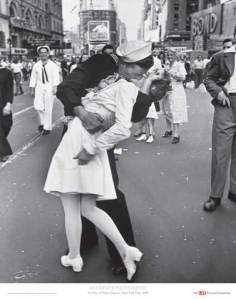An ionic image brings a moment to life. The image is usually easily recognized and generally represents an object or concept with great cultural significance to a large group of people. Most of the time, the object or person in the image is regarded as a special status as particularly representative of, important to, or loved by, a particular group of people, a place, or a period in history.
Julia DeIuliis, writer for Quora.com, explains that there are three reasons of that makes an image iconic. The first one is if it perfectly captures an event or artistic style. If an image represents and tells the story of an event or particular style, than that image will be become referenced or discussed anytime that event or style is discussed. In all future discussions of the topic or style, people need to discuss that image, and eventually, that image becomes emblematic, representative, or synonymous with the topic being discussed. Eventually, that strong association is part of what makes the image iconic
The second reason an image to be iconic, is for a lot of people need to have seen it and be familiar with it. It should be the norm that people have seen it and know what it is. Because of its ubiquity, other artists reference it in their own work. If something becomes parodied a good deal, that’s one form of reference, and its a sure sign that something is on its way to becoming iconic. Alternatively, artists could reference the image in their work to help users feel an immediate familiarity with that work.
The final reason an image can be iconic it has an impact on public opinion. It’s very rare that an image directly results in action, so if an image is striking, visceral, and temporal enough to do so, it’s on its way to becoming iconic.
The Kiss by Alfred Elisenstaedt-1945
This photo is iconic because it represents a significant time frame in our countries history. On August 14, 1945, Japan surrender was announced signaling the end of World War II. The photo depicts the celebration of this event as a young man runs down the streets of downtown New York grabbing any and every girl in sight. The media portrayed the photo and story as a sailor reuniting with his long lost love, which it was not, but the image became an enduring symbol of America’s exuberance at the end of a long struggle.
Migrant Mother by Dorothea Lange-1963
This photo became an iconic image of the Great Depression. At the time, the 32 year-old women was a widow with seven children. Forty years later, the woman was identified as Florence Owens Thompson.
Black Power salute by John Dominis-1968
This photo was taken during the 1968 Olympics in Mexico City. Athletes Tommie Smith and John Carols are shown making a black power salute as a civil rights protest while receiving the gold and bronze medals in the 200m dash. The athletes were later banned from the Olympics for making the political statement.The event was one of the biggest political statements in the history of the modern Olympic games.



